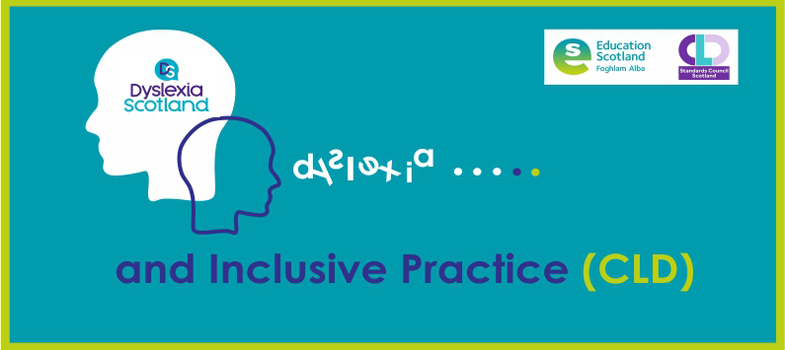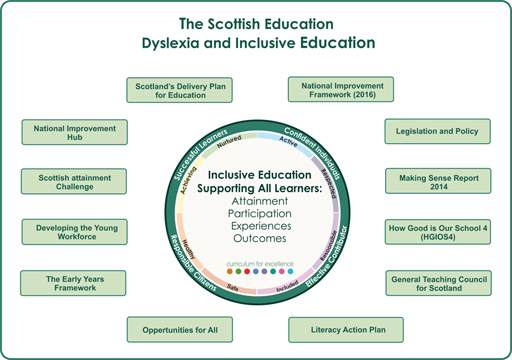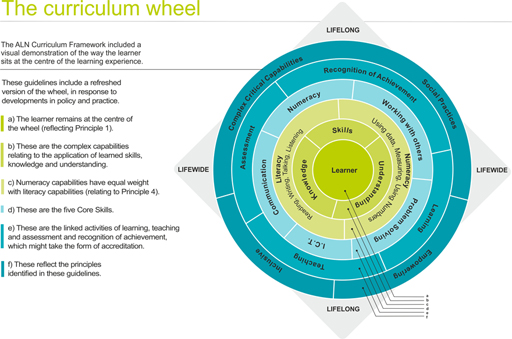1.1 The Scottish Context
Whilst dyslexia affects on average 1 in 10 of the general population, this proportion tends to be much higher in prison, unemployed and homeless populations. CLD services often engage with disadvantaged groups such as these.
Dyslexia is hereditary and therefore many dyslexic adults accessing CLD support may also have children with dyslexia. Historically, identification and support of dyslexia was very different to contemporary education settings. Adults accessing CLD or taking part in informal community development activities may have had a negative experience of education in the past, so might lack confidence in participating in learning. Dyslexic learners can thrive in an inclusive learning environment. CLD practitioners are well placed to engage and inspire in informal learning contexts, providing appropriate support is given. It may be useful for practitioners to understand the current context for how dyslexia is identified and supported in schools.
Dyslexia Context at School
For school aged children and young people, Scotland’s education system is an inclusive one which is ‘needs led’. This means that the provision of support does not require a formally identified label, for example dyslexia. In Scotland ‘Additional Support Needs’ is the standard terminology used when children and young people need more - or different - support to what is normally provided in schools or pre-schools to children of the same age. Our education system is designed to make sure that every child and young person is entitled to support to enable them to gain as much as possible from the opportunities which Curriculum for Excellence can provide.
Download a summary overview of Curriculum for Excellence [Tip: hold Ctrl and click a link to open it in a new tab. (Hide tip)]
As we consider the educational provision for learners with dyslexia in Scotland, it is important to acknowledge and consider the national agenda, legislative and guidance context within which local authorities, teachers and other educators work. Figure 2 provides you with an overview of Scottish education and the equality and inclusion context for schools and local authorities.
Dyslexia context post-school
Many of the adults you may work with within a CLD context may not have had a formal identification or assessment of dyslexia. They may not be aware that they are dyslexic. If they have had a formal assessment, it is more likely to have been carried out independently.
Many adults with literacy difficulties may believe they have dyslexia. However it is important to consider other factors.
Regardless of whether an assessment has taken place, the CLD approach to working with individuals who may encounter issues with dyslexia should follow a needs led model and be in line with current CLD related policy perspectives such as ‘Adult Literacies in Scotland 2020: Strategic Guidance’, ‘Adult Learning in Scotland: Statement of Ambition’ and the ‘National Youth Work Strategy’.
Download: Adult Literacies in Scotland 2020: Strategic Guidance
Download: Adult Learning in Scotland: Statement of Ambition
Download: The National Youth Work Strategy.
These policies endorse a social practice approach which means starting where the learner is and focussing on developing the skills, knowledge and capabilities that will impact on their life in whichever way they identify. Relevant social practices will differ between individuals: for one learner this might involve reading labels, estimating prices in their head and checking change; for another it might involve helping their children with homework, or passing an entrance exam to get onto a college course or to gain employment; another learner may need help with the theory test for a driving licence. The social practice approach is well embedded in adult literacies practice. The Figure 3 shows how the learner is placed at the centre and how their development is not planned around a set curriculum but instead focuses on what they identify they most need.
1 Understanding Dyslexia in Scotland


